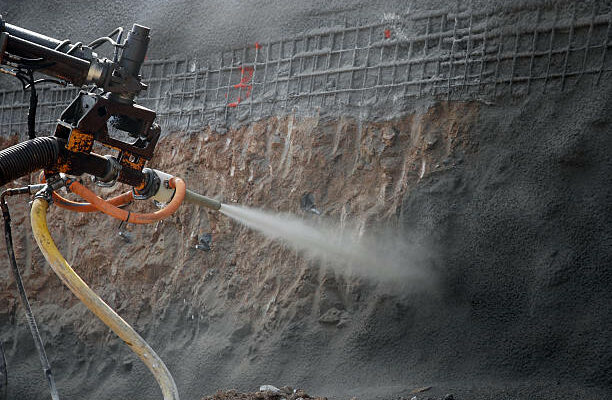There are dozens of methods for soil stabilization, ranging from adding cement and chemicals to mechanical methods like compaction. In this article, we’ll discuss the most common methods used for soil stabilization and their strengths and weaknesses. If you have never heard of these methods, read on for some useful information. Listed below are the pros and cons of each method. Let’s get started! What Are the Different Methods of Soil Stabilization?
Bituminous soil stabilization
Bituminous soil stabilization involves mixing a bituminous substance with the existing soil to increase its mechanical properties and strength. Bitumen increases the soil’s cohesion, increasing its load bearing capacity and making it water resistant. However, this process is not suitable for clay soils. As it is highly viscous, the dosage rate of bitumen used depends on the type of soil and the gradation of the land.
In addition to bitumen, latex, and coal fines are used for soil stabilization. Bitumen is primarily composed of hydrocarbons with traces of metals. Because of its thermoplastic properties, it has low melting points and is less stable than a compacted soil layer. In some cases, bitumen is applied in conjunction with sand to stabilize non-cohesive soils.
The main benefit of soil stabilization is its ability to provide greater bearing capacity for structures. The process involves modifying soil properties through controlled compaction, proportioning, and the addition of suitable admixtures. This process reduces the amount of settlement and frost susceptibility, and increases the stability of earthworks. Bituminous soil stabilization is a valuable tool for building stronger roads and bridges. The process of stabilization has a number of other benefits.
Researchers have found that bitumen can stabilize native soil up to 20 percent. In contrast, motor oil is only 4% effective for stabilizing soils, while bitumen is better at reducing the amount of permeability. Furthermore, bitumen’s impact on soil properties is similar to motor oil; the addition of bitumen decreases the liquid limit and plasticity of soil. Further, bitumen imparts a cementing effect that UMO does not have.
Historically, the process of soil stabilization with cement has two distinct functions: altering the nature of soil and cementing the altered soil into a waterproof mass. Bitumen and cement are commonly used to produce soil-cement. The process of soil-cement involves any type of gravel rock combination. This method requires laboratory testing to determine the amount of cement to use and how much water it requires to create a cohesive, waterproof mass. The cement is important in the process of compaction, because it prevents the soil from drying out. It also prevents water evaporation.
Chloride soil stabilization
While Mag Chloride is an effective method for dust suppression, it is bad for the environment. This solution must be retreated after rain, and it wears off after six to twelve months. For a longer lasting solution, consider using other types of chemical soil stabilizers, such as cement/lime and polymers. These alternatives do not require any special PPE, and they are completely environmentally safe. Listed below are some benefits of using an enzyme-based soil stabilizer.
Calcium chloride improves the strength and compressive behavior of clayey soils. Calcium chloride increases the amount of bentonite, kaolin, and clayey soils’ porous network. In addition, MgCl2 can be used to stabilize a range of clayey soils. This treatment is best used in situations where a higher level of moisture is required for stabilization. However, this is only one technique.
Magnesium chloride is another type of soil stabilizer. This salt is often used to control dust, to improve roads, and for deicing. It can be applied in either a liquid or solid form and works with virtually any type of soil. The process can increase the mechanical strength of soil and stabilize landslides, but the results can vary widely. For this reason, you should conduct research before using this method.
Another type of soil stabilization is using lime. This method is particularly effective for clay soils, and lime is a very good option for retaining moisture in the soil. Lime reduces plasticity in soil, so it won’t swell or shrink, and it absorbs minimal ground water. Lime particles can also be driven on without the risk of getting stuck. They also don’t stretch. In addition, lime reduces the possibility of cracking.
Another form of soil stabilization is known as chemical stabilization. This method uses chemicals to alter the physical structure of soil. Soils without stabilization are generally comprised of bigger particles, making them less able to support traffic. Additionally, the lack of stability makes them easily washed away by running water. Soil stabilization can be done on a wide range of subsoils and parking lots. You can also use it for parking lots or site development projects.
Geotextiles
Geotextiles are synthetic materials that are used to stabilize soil. These materials are composed of polythene, polyester, or nylon. These materials are permeable, similar to fine or coarse sand, and they are resistant to chemicals and biodegradation. They also provide a more stable working platform and can help stabilize soil that is unstable. In addition to their tackiness, geotextiles are also resistant to punctures and interlocking grab strength.
Nonwoven geotextiles are made of polyester or polypropylene fibers and are heat-set and needle punched. They can be lightweight (3-5 oz.) or heavy (16-100 oz.) These materials are made to allow subsurface water drainage while preventing clogging of drainage systems. They can also be used as padding beneath pond liners. Because they provide drainage and erosion control, geotextiles are also used for hardscaping projects.
There are two types of geotextiles: biodegradable geotextiles and synthetic geotextiles. While biodegradable geotextiles are best suited for steep slopes, they cannot be used in areas with a high degree of soil erosion and poor plant life. Nevertheless, they can be useful for slopes that are up to 35 degrees and in areas where vegetation is not well established.
Geotextiles are often used to stabilize soil in areas where it is hard to build. Their installation is a classic ground improvement technique. They are made of a material that provides erosion control, drainage, and increases soil stability. In addition to strengthening the soil, geotextiles help to reduce erosion by protecting it from the harsh elements of nature. The benefits of geotextiles are numerous.
Enzymatic soil stabilization involves the use of enzymes and other chemical compounds that will bond with the soil. These chemicals are environmentally friendly and often contain a small amount of clay in the soil. These products require a minimum amount of clay to be effective. Geotextiles are a great choice for stabilizing soils in difficult to work areas. Soil types vary greatly in their stability and require different methods for stabilization.
Fly ash
One way to stabilize soil is to add fly ash. When mixed with lime, fly ash produces a concrete with lower swell potential and can be compacted to 48 kPa (100 psf) with optimum moisture content. This soil stabilization method is environmentally friendly and cost-effective. However, further research is needed to determine how well fly ash stabilizes soil. Check this link to learn more about soil stabilization.
The addition of fly ash to soil improves the unconfined compressive strength of organic soils. The type of fly ash used and the soil properties affect the strength of stabilized soils. It is important to note that the addition of fly ash increases the dry density of the soil mixture, but compromises strength with higher density. This makes fly ash an effective soil stabilization option for the coastal regions of Bangladesh.
When used correctly, fly ash has many applications. It is partially substituted for Portland cement in concrete. In fact, a large portion of FA is used in concrete. Currently, in the US, more than 60% of FA is used for concrete production. The remainder is primarily used for cement and concrete production. In contrast, FA utilization for soil stabilization only accounts for 0.34% of total production.
A standard for fly ash is ASTM D-5239 6.4. Using a standard 2-mm sieve, the ash should meet this specification. Its composition should be between twenty-five and thirty-six percent CaO, and the percentage of fly ash should be no more than 25 percent. Generally, the amount of fly ash used is determined by laboratory testing. The higher the amount of fly ash, the higher the compressive strength.
Another way of soil stabilization involves mixing cement and fly ash. Cement is an inorganic compound that contains active ingredients that disintegrate soil and conceal it. Other materials can also be added to the cement mixture, such as lime, calcium chloride, sodium carbonate, or fly ash. Depending on the type of soil, the amount of cement used will vary. In general, the recommended amount is 10 percent on gravel.




Comments